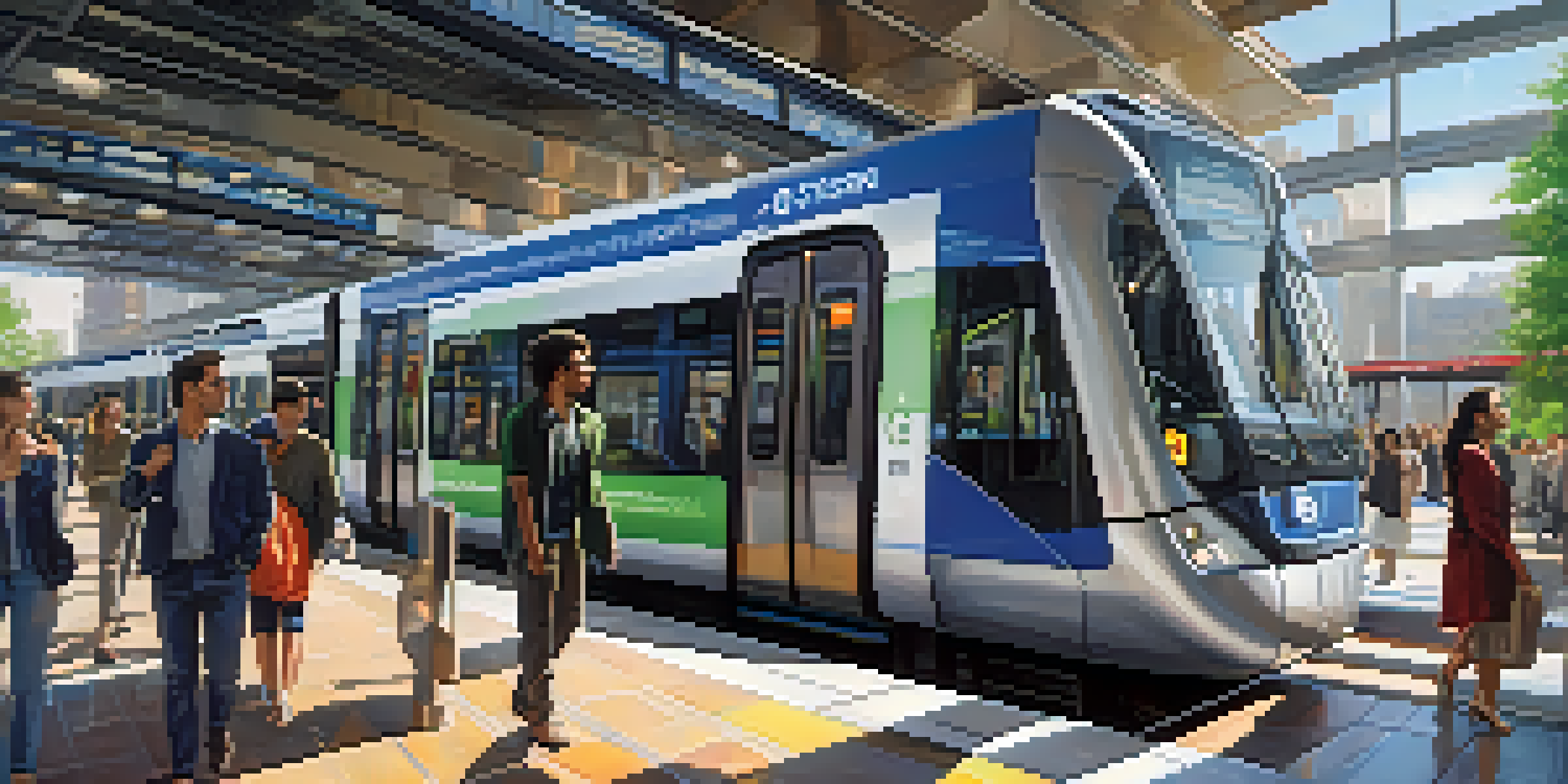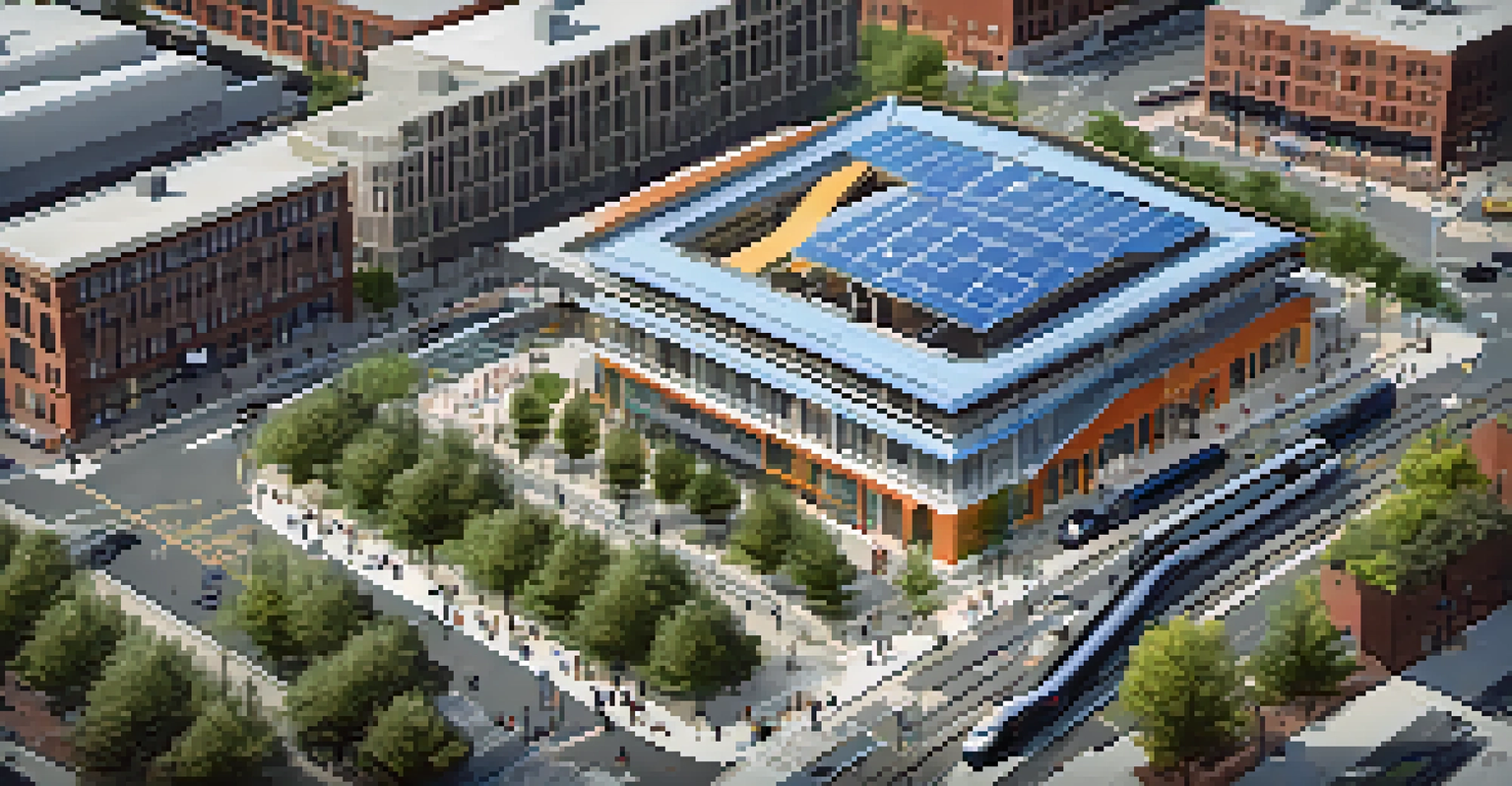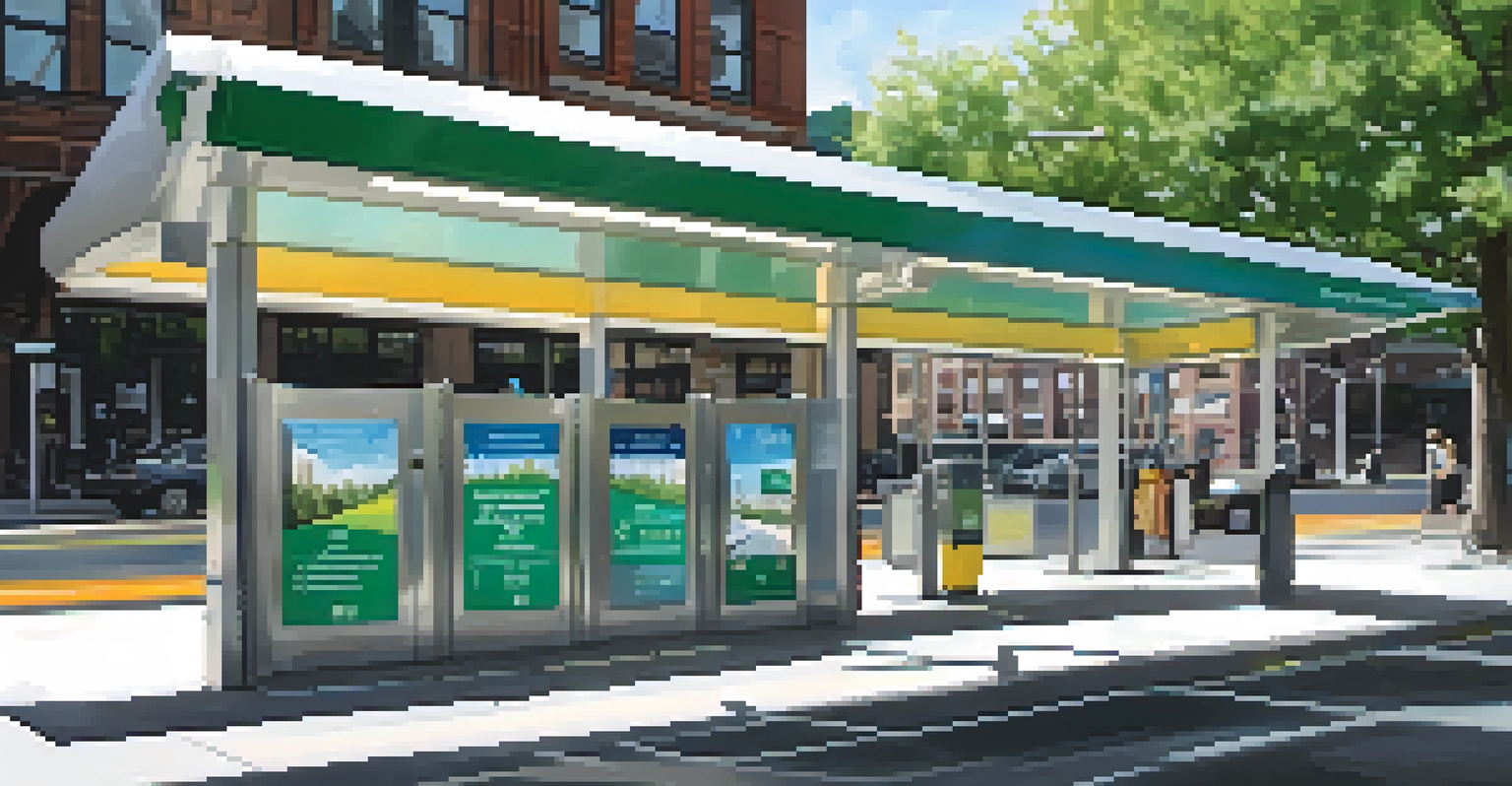Local Infrastructure Developments Impacting Jersey City Transit

Overview of Jersey City's Current Transit Landscape
Jersey City's transit system is a bustling network that connects residents to Manhattan and beyond. With a mix of light rail, PATH trains, and bus services, it caters to a diverse population. However, as the city grows, so do the demands on this system, prompting a need for significant infrastructure developments.
Public transportation is a vital part of urban life, helping to reduce congestion and promote a more sustainable future.
In recent years, the city has seen an uptick in population, leading to increased congestion and longer commute times. This has sparked public discussions about the necessity of upgrading and expanding transit options. Local leaders are responding to these challenges with ambitious infrastructure plans aimed at enhancing connectivity.
By investing in infrastructure, Jersey City aims to not only improve commuter experiences but also to promote sustainable transportation options. This is crucial for reducing traffic congestion and minimizing environmental impact, especially in urban areas.
Key Infrastructure Projects Underway
Several major infrastructure projects are currently in progress, aimed at revitalizing Jersey City's transit system. One noteworthy initiative is the extension of the Hudson-Bergen Light Rail, which will increase service accessibility for residents in underserved neighborhoods. This extension promises to connect more people to local jobs and services.

Another significant project is the redevelopment of the Journal Square Transportation Center. This hub is being modernized to accommodate more passengers and provide improved services, including better amenities and transfer options. Enhanced facilities will make commuting more pleasant and efficient.
Jersey City Transit is Expanding
Significant infrastructure projects, including the Hudson-Bergen Light Rail extension, aim to improve accessibility and connectivity for residents.
Additionally, the city is exploring new bus rapid transit routes, which are designed to offer faster and more reliable bus services. These developments reflect a comprehensive approach to addressing transit needs as the population continues to grow.
Impact on Commuter Experience
As these infrastructure projects come to completion, the expected impact on commuter experience is substantial. With enhanced service frequency and better connections, residents can anticipate shorter wait times and more reliable transit options. This improvement is essential for those who rely on public transportation for their daily routines.
The best way to predict the future is to create it.
Moreover, upgraded facilities will also contribute to a more comfortable commuting environment. For instance, modernized waiting areas and improved signage can make navigating the transit system significantly easier for all users. This is particularly beneficial for those unfamiliar with the city’s transit options.
Overall, these developments aim to create a more user-friendly transit experience, encouraging more residents to choose public transportation over driving. This shift could lead to reduced traffic congestion and a lower carbon footprint in the long run.
Sustainability Efforts in Transit Planning
Sustainability is a core principle guiding Jersey City's transit infrastructure developments. By prioritizing eco-friendly options, the city aims to reduce its overall environmental impact. Projects like the expansion of the light rail are not just about increasing capacity; they also promote greener modes of transportation.
The adoption of energy-efficient technologies in new transit facilities is another key aspect of these sustainability efforts. For example, solar panels and energy-efficient lighting are being integrated into the designs of new transit hubs. These initiatives not only lower operational costs but also align with the city’s commitment to environmental stewardship.
Sustainability Drives Transit Planning
Eco-friendly initiatives, such as energy-efficient technologies and promoting multi-modal transport, are central to Jersey City's transit development.
Furthermore, the focus on walkability and bike access alongside public transit aims to create a more holistic approach to urban mobility. By encouraging multi-modal transit options, Jersey City is paving the way for a more sustainable future.
Community Involvement in Transit Planning
Community involvement plays a crucial role in shaping the future of Jersey City's transit system. Public meetings and forums have been organized to gather feedback from residents about their transit needs and preferences. This participatory approach ensures that infrastructure developments align with the community's expectations.
Local advocacy groups have also been instrumental in pushing for improvements and highlighting issues within the current transit system. Their efforts have raised awareness about the importance of equitable access to transportation for all neighborhoods. By amplifying the voices of residents, they help to inform decision-makers about necessary changes.
Ultimately, fostering a collaborative atmosphere between city officials and residents leads to better transit solutions. When the community feels heard and valued, it creates a sense of ownership over local infrastructure developments.
Challenges Facing Infrastructure Developments
Despite the ambitious plans for infrastructure improvements, Jersey City faces several challenges that could impact progress. Budget constraints and funding limitations are among the most significant hurdles. Balancing the desire for extensive upgrades with financial realities requires careful planning and prioritization.
Additionally, construction disruptions can pose a challenge for daily commuters. As projects move forward, residents may experience delays and altered transit routes, which can lead to frustration. Clear communication from city officials about timelines and expected changes is crucial to minimize inconvenience.
Community Engagement is Essential
Public involvement and feedback are crucial for ensuring that transit improvements meet the diverse needs of Jersey City's residents.
Lastly, ensuring that developments are equitable and serve all community members can be complex. Addressing the needs of diverse populations while implementing infrastructure projects requires thoughtful consideration and ongoing dialogue.
Future Prospects for Jersey City's Transit System
Looking ahead, the future prospects for Jersey City's transit system are promising, provided that current infrastructure projects are successfully implemented. The vision of a more connected, efficient, and sustainable transit network is achievable through continued investment and innovation. With the right focus, Jersey City can serve as a model for urban transit systems nationwide.
Moreover, advancements in technology, such as real-time tracking and mobile ticketing, are likely to enhance the commuter experience further. These innovations can make public transportation more accessible and user-friendly, attracting even more residents to utilize the system.

As Jersey City continues to evolve, its transit system must adapt to meet the changing needs of its population. By embracing new ideas and prioritizing community involvement, the city can ensure that its transit infrastructure effectively supports its residents for years to come.